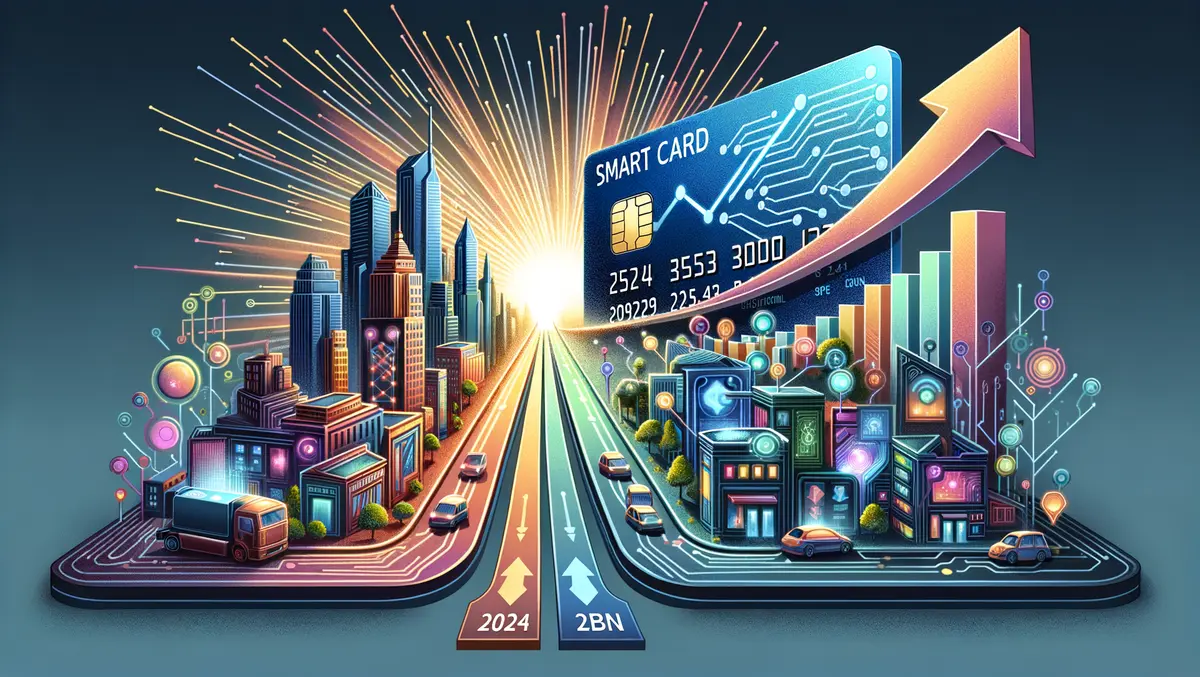
Smart card market projected to reach $24.2bn by 2034
The global powered smart card market is set to reach a value of US$14.5 billion by 2024 and is expected to grow to US$24.2 billion by the end of 2034, according to a recent study by Fact.MR. The market is projected to see a compound annual growth rate (CAGR) of 5.2% over the decade.
This comes as powered smart cards continue to offer advanced functionality and improved security features compared to traditional magnetic stripe cards. They process and retain data, facilitating secure transactions, identity verification, data confidentiality, and access management across a variety of applications. Also referred to as integrated circuit cards (ICs) or chip cards, these smart cards come equipped with robust data processing and storage capabilities - making them appealing across sectors including retail, transportation, healthcare, government, and finance.
Important findings from the market study include global demand for powered smart cards predicted to rise steadily over the next decade, with the market projected to reach US$24.25 billion by the end of 2034. The East Asian market is absolutely surging with a forecasted growth at a CAGR of 6% through 2034. The sale of dual-interface cards - a classification of smart card that can be accessed both by contact and contactless means - is expected to rise at a CAGR of 5.9% till 2034. Additionally, North America is estimated to hold a significant stake in the market with a 28.6% share by 2024. A Fact.MR analyst commented, "Main drivers supporting the growth of the powered smart card market are the growing demand for smart healthcare, efficient access control applications, rising digitalization across sectors, and increased demand for secure transactions in the eCommerce space."
As new security and privacy concerns emerge, the annual demand for smart cards is increasing across diverse end-use sectors. Banking and finance, for example, is predicted to hold a significant portion of the global powered smart card market by 2034. The development of better and more secure smart card solutions, demonstrating cutting-edge encryption and biometric technologies, is currently a focus for industry leaders in their research and development (R&D) strategies.
This drive for a higher security standard is underscored by the fact that businesses are moving beyond traditional smart card solutions and offering alternative mobile payment applications, potentially replacing physical cards completely. Additionally, to enhance customer experience further, companies are introducing supplementary services like customizable cards, advanced card management systems, and data analytics tools.
Interesting market developments mentioned in the study included a four-year agreement signed in January 2021 between Jyske Bank, Denmark's second-largest bank, and IDEMIA, a leading provider of biometric identification services, to introduce the country's first recycled plastic payment card. Such collaborations underline the innovative spirit within this flourishing industry.
The insights detailed in the report were based on observations of the powered smart card industry, covering smart card types (contactless, hybrid, dual-interface), application fields (government, healthcare, transportation, telecommunications, financial services, retail, pay TV, energy utility), and spanning several major regions around the world.


